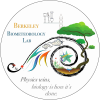Reports
Contents
| Title: | PAR comparison 12-2018 | |||||||||||||||||||||||||||||||||||||||||
| Date: | 2018-12-11 | |||||||||||||||||||||||||||||||||||||||||
| Data File: | PARcompare_20181211.csv | |||||||||||||||||||||||||||||||||||||||||
| Refers to: | 161073,10162,010161,030381,030380,LQ1570 | |||||||||||||||||||||||||||||||||||||||||
|
We set up 5 PAR sensors from the lab (test sensors) next to each other for a comparison with an Ameriflux-calibrated (reference) PAR sensor from 2018-12-08 to 2018-12-11. The 6 sensors were set up about 0.5m outside of a south-facing lab window on the 2nd floor. There seems to be greater hysteresis in this comparison than the previous comparison in late September. The sensors were connected to a CR6, which scanned the sensors every 10 seconds and recorded 10-minute averages. The line quantum sensor seems to be dead. The new calibration coefficients are below.
 Figure 1. Time series of PAR data. The max PAR in early December (~1500 umol/m2/s) is much lower than the max PAR in late September (~2500 umol/m2/s). Figure 3. Example of hysteresis in the morning.
Figure 2. Scatter plot of test sensor mV readings against the Ameriflux sensor umol/m2/s readings. Only values >0.2 umol/m2*s are included to prevent too much weight from night-time data. I used the slope of the linear regression lines to calculate the new calibration coefficients. |
||||||||||||||||||||||||||||||||||||||||||
| |

